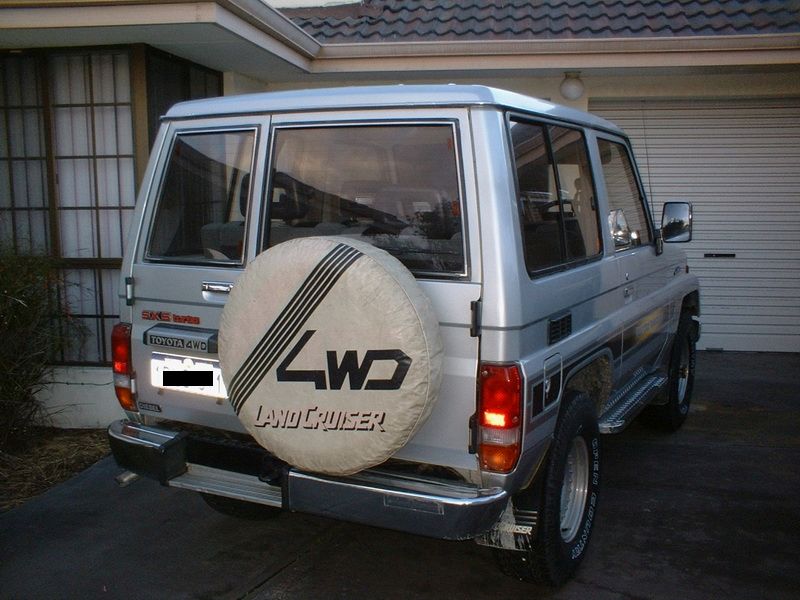Check current SEVS approved vehicle import list and compliance availability
We specialise in sourcing Japanese-built cars less than 15 years old and we arrange the whole import process for Australian buyers.
See How Direct Car Import Works for a short video plus step by step summary of the process.
Before looking for cars to import, it is essential to understand the import restrictions, costs and process to ensure it is 1) possible and 2) cost effective to import the car you want.
We would love to assist you to import your next vehicle providing that the model is eligible for import, compliance is available and your budget matches current market pricing.
The following information deals with the regulations controlling car import to Australia.
Our service fee varies according to your needs.
The first thing you need to know is that importing cars to Australia is strictly controlled by the Australian vehicle import regulations – you can’t just import any car you want, sorry !
NEW import regulations commenced for Australia on 10 December 2019 with an extended transition period from old (MVSA) to new (RVS) regulations occurring between 10 Dec 2019 and 30 June 2023.
The vehicle import regulations allow only some vehicles for import to Australia, based on age, specialist nature and other criteria.
The regulations apply on ENTRY to Australia, regardless of which country the vehicle came from.
The import regulations can be confusing for the first time car importer as there is a lot more to importing a car than whether it is technically eligible for import.
QUICK TEST – If the SAME vehicle year / model / configuration was SOLD NEW in Australia AND it is younger than 25 years, then it CANNOT BE IMPORTED.
There are two exceptions – import for Race or Rally use OR Personal Import (you have owned the vehicle for more than 12 months while living overseas AND you are returning home to Australia permanently as an Australian citizen / permanent resident or you have a visa application in progress).
So, for people living in Australia and wanting to import a vehicle for normal road use there are effectively only two (2) import options – the 25 Year Rule for vehicles OVER 25 years old, and SEVS for vehicles YOUNGER than 25 years.
All regulations are tightly controlled through the Import Approval process so please be sure to read the further detail about each option below.
Australian Vehicle Import Regulations – four (4) import options
– 25 Year Rule
– SEVS
– Personal Import Scheme (PIS)
– Race / Rally
1) 25 Year Rule
Please note due to rapid price rises on classic and collector models since 2020 we no longer source vehicles older than 15 years. So the following details about the 25 Year Rule are for information only.
A crackdown on asbestos by Aust Border Force (Customs) in 2023 has also increased the risk and cost to import old cars under this import method.
The 25 Year Rule replaced the ‘1988 and older rule’ on 1 July 2021.
There are restrictions on modified cars and large vehicles.
How to apply for an Import Approval under the 25 Year Rule and what is considered significantly modified.
Vehicle must be more than 25 years old (to the month of manufacture) at the time of application AND conform to one of the following classifications (no trucks or buses):
(i) Passenger Car (MA);
(ii) Forward-control Passenger Vehicle (MB);
(iii) Off-road Passenger Vehicle (MC);
(iv) Moped – 2 wheels (LA);
(v) Moped – 3 wheels (LB);
(vi) Motor cycle (LC);
(vii) Motor cycle and side-car (LD);
(viii) Motor tricycle (LE);
(ix) Light Goods Vehicle (NA)
Note – the build date used to calculate age is:
(a) the manufacture date; or
(b) if the Minister is satisfied that significant modifications that comply were made to the vehicle after manufacture – the date that the last of the significant modifications were completed. e.g. A 1960 vehicle with upgraded engine, transmission or brakes from a 2000 model vehicle would be eligible for import from 2025.
Over time, many interesting models will become available under this rule that Australia has not previously had access to. However, other markets such as the USA also have their own 25 Year Rule (and Canada has a 15 Year Rule) so competition will be strong for the best classic cars.
Vehicles imported under this rule are subject to minor compliance requirements including fitment of child restraint points for rear seats (if required) and 17-digit VIN plate (for non-European models), as well as an approved engineer’s sign-off. Requirements vary depending on age and type of vehicle and usually cost between $1,000 to $2,000 depending on the vehicle.
Road registration is completely separate to the federal Import Approval process and is controlled by State and Territory regulations.
Left hand drive (LHD) vehicles are eligble for import under the 25 Year Rule but you should check with the Registration Authority in your State or Territory on the regulations that apply to the registration of LHD and modified vehicles as this varies and may be over 30 years old in some locations.
2) SEVS
Applies to all vehicle models newer than 25 years where at least 3 months have passed since the model was first made available in another country.
Certain models that were sold here new can still be imported if they are “significantly different” versions of the locally sold model.
Significantly different is defined here
An application must initially be made for each model to be evaluated, approved and added to the eligible model list.
Eligible vehicle models and approved compliance workshops and model reports under new SEVS can be viewed on the ROVER system.
How to use ROVER to check import eligibility and compliance
1st eligibility test for SEVS – the same vehicle model CANNOT have been sold in Australia new (in full volume) by the manufacturer during the same time period.
This blocks many standard models of sedan, people mover and SUV sold new in Australia that you may be familiar with such as BMW, Mercedes, Audi, Porsche, Volkswagen, Peugot, Honda, Land Cruiser, Range Rover and so on – ie. if you could have bought the same year, make, model and specification new in Australia, then that vehicle cannot be imported secondhand under SEVS.
There is one interesting exception here – if an overseas model has design characteristics that are ‘significantly different’ to the locally sold model then it may be considered eligible for import as a different variant.
So if the manufacturer decided not to offer all variants (or perhaps a special commemorative model) for sale in Australia, you may be able to import one of those, either new or secondhand.
Differences are evaluated on a case by case basis, and an application will need to be submitted to the Govt. together with supporting evidence.
What does significantly different mean ?
For vehicles of 12 tonnes or less (ie. regular passenger vehicles):
(a) the capacity, configuration or induction of an internal combustion engine;
Examples – 2L engine vs 1.8L engine, turbo / super charged vs normally aspirated.
(b) the type of motive power driving the engine or motor;
Examples – plug-in hybrid vehicle vs standard hybrid is considered significantly different, but running on unleaded petrol vs premium unleaded petrol is not.
(c) the transmission or drivetrain system;
Examples – different number of gears such as 6 speed vs 5 speed, manual transmission vs automatic, all wheel drive or rear wheel drive vs front wheel drive.
(d) the body shape;
Examples – different number of doors, coupe or sedan vs hatchback or wagon.
(e) the vehicle category;
(f) where the application is made on the basis of the mobility criterion – features designed to assist people with a disability;
Examples – disabled access vehicles with factory-fitted powered chairs for entry, rear ramps etc.
(g) or any other differences in the discretion of the Minister
A model may also be considered a significantly different variant if it exhibits differences in more than one of the following design characteristics:
– colour, upholstery, trim or other cosmetic features;
– same engine but different engine tuning or software;
– marketing name;
– other differences in the discretion of the Minister
Once a model passes the initial tests above, to be approved for import it must then meet any ONE of the following SIX criteria:
Performance – power to weight threshold
Must produce at least 110 kW/T (kilowatts per Tonne) if manufactured before 1 January 2020, or if manufactured after 1 January 2020 must produce at least 130 kW/T.
Environmental Performance – low emissions, alternate power source to internal combustion (of oil or gas), or micro-car (such as 660cc kei cars):
-
Originally designed and manufactured to use an alternate means of propulsion to internal combustion of gas or oil either exclusively, or in addition to an internal combustion engine, e.g. hybrid or fully electric;
-
Meets or exceeds the national road vehicle emissions standards at the time of application (or as determined by the Minister). This figure will change over time as vehicles generally become more fuel efficient);
-
Micro-car (kei-class car) with less than 660cc / 47kW, and under 3.4m long x 1.48m wide.
This allows the import of a wide range of hybrid models and kei cars that were not sold new in Australia.
Browse the current hybrid electric import options
Mobility – originally manufactured or fitted from the factory with substantive specialist mobility features to assist people with disabilities. Features would include rear ramps for wheelchair access, lift up and out style powered access seats, and portable wheelchair car seats.
Rarity – total worldwide production of the vehicle ‘Make’ < 3000 units per year; or total worldwide production of the vehicle ‘Model’ < 1000 units per year; or total worldwide production of the vehicle ‘Variant’ < 100 vehicles per year.
*The production number thresholds are based on annual average over the life of the model.
*Left-hand drive vehicles imported under the rarity criterion will not require conversion to right-hand drive BUT will still need to meet relevant State or Territory registration requirements prior to road use (these vary between 0 and 30 years). So in some cases this will mean a model CAN be imported, but CAN’T be road registered until old enough to meet the relevant LHD regulations for that location.
Left-hand drive – originally manufactured as a left-hand drive vehicle AND not available as an originally manufactured right hand drive vehicle in another world market.
Must be in one of the following vehicle categories:
(i) Passenger Car (MA);
(ii) Off-road Passenger Vehicle (MC);
(iii) Light Goods Vehicle (NA);
(iv) Medium Goods Vehicle (NB);
(v) Heavy Goods Vehicle (NC);
These vehicles will require conversion to right hand drive for safety reasons, at the time of compliance.
Campervans and Motorhomes – originally manufactured as a campervan or motorhome OR suitable for such modifications as would be necessary to convert it into a campervan or motorhome in compliance with the applicable standards determined by the Minister.
3) Personal Import Scheme (PIS)
You cannot use this import option if you are living in Australia.
“Personal import” means more than just importing a vehicle yourself.
It is only available to Australian citizens or permanent residents returning home to Australia (permanently) after a period of living overseas AND migrants moving to Australia with a visa (or pending visa application) which allows permanent residence.
One vehicle is allowed every five years and only individuals can apply – either before entering Australia or within 6 months of entering.
The vehicle must be registered in the individual’s name overseas for more than 12 continuous months prior to the application for import approval.
There are significant restrictions on personal car imports, and full evidence is required when applying.
More information about residency / visa requirements and Personal vehicle import to Australia.
4) Race / Track
Virtually any vehicle can be imported for race use only providing you have a suitable CAMS license and can show a genuine need for the vehicle plus past motorsport participation. If you are unsure whether you qualify you can query the Govt. directly. Include your reason for needing the car and your race history.
Vehicles imported this way can ONLY be used for racing and not road registered.
Important points to note about SEVS
-
Standard diesel or petrol people movers are generally not allowed for import unless they fit the “camper” criteria – for example the popular Delica D:5 is allowed for import under new SEVS using the camper option.
-
A model is eligible for addition to the SEVS list once available in another country for 3 months.
-
Pre-approved Govt. Model Reports will be used – to make compliance “cheaper, easier and more consistent” – catalytic convertors, new tyres and emissions testing requirements are reduced.
-
No compliance quota for workshops.
-
Compliance plates are no longer physically fitted to the car, instead they are searchable by VIN on a publicly accessible online register.
-
Independent Authorised Vehicle Verifiers (AVV) check all imports following compliance to ensure that the work is done correctly and there is no structural damage / rust.
-
-
AVV Inspection results are recorded on the National Exchange of Vehicle and Driver Information Services (NEVDIS) and publicly accessible via the PPSR (Personal Property Securities Register).




I imported a Landcruiser through you back in 2002 and she’s still going strong. Thanks for the great service !